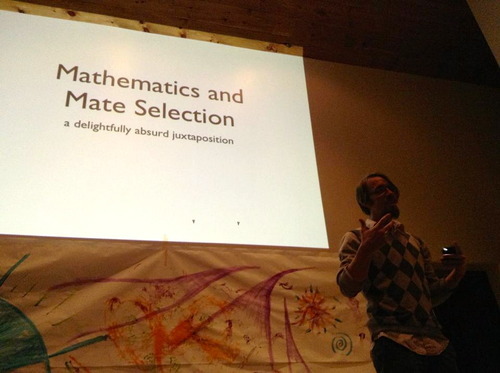This last weekend I went on a ski retreat for the seriously geeky with about 50 other people. After we finished a carefully prepared paleo/primal meal, we gathered for microtalks on advanced origami, lifehacking, and the application of mathematics to mate selection.

We’re in the business of applying algorithmic learning to job matching, so math and dating seemed like the perfect topic for a Valentine’s Day blog post. Ben Woosley (pictured) was kind enough to let me share his presentation.
So – given that mate selection generally means selecting a single best candidate from among your available dating pool based on a dizzying array of variables, how can we make sure we are choosing the best possible person?
First, we can break down all these variables into four major categories:
1. Physical Attractiveness
2. Social Status
3. Intelligence
4. Personality
Generally, these four need to be a fit if we’re assessing for long-term compatibility. But life is is short! How do we make sure that we optimize dating time spent so we end up with the right partner?
Ben, with the help of this paper by Geoffrey F. Miller and Peter M. Todd, applied the Secretary Problem: one of many names for a famous problem of the optimal stopping theory. Basically, it tries to solve what percentage of a set of options you need to evaluate before further evaluation no longer leads to a better choice.

Read the paper reference for additional analysis, be essentially, if you can figure out the number of total people you have available/want to date, after dating the first 37% of them, set your aspiration level based on the best person in that group – then propose to the first person who exceeds that benchmark for the ultimate in “til-death-do-you-part” happiness.
See? It’s simple. Happy Valentine’s Day from
Upgrade to Source Pro Account to access all the features